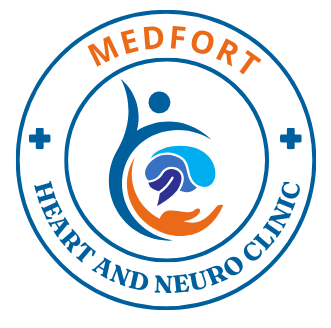Spine Treatment
The spine is a critical part of the human body, providing structural support, protecting the spinal cord, and enabling movement. Spine disorders can range from mild discomfort to severe conditions that significantly impact daily life. Common spine problems include herniated discs, spinal stenosis, scoliosis, degenerative disc disease, and injuries from trauma.

Symptoms of Spine Disorders:
- Persistent back or neck pain
- Numbness or tingling in the limbs
- Weakness in the arms or legs
- Difficulty walking or standing for long periods
- Loss of bladder or bowel control (in severe cases)
Common Spine Disorders:
- Herniated Disc: A condition where the soft tissue between vertebrae pushes out, causing pressure on nearby nerves.
- Spinal Stenosis: The narrowing of the spinal canal, which can compress the spinal cord and nerves.
- Scoliosis: A sideways curvature of the spine that can affect posture and movement.
- Degenerative Disc Disease: Age-related wear and tear of spinal discs, leading to chronic pain and reduced flexibility.
- Spinal Injuries: Trauma from accidents or falls can lead to fractures, dislocations, or damage to the spinal cord.
Diagnosis:
Diagnosing spine disorders involves a combination of physical examinations, imaging tests (such as X-rays, MRI, or CT scans), and sometimes nerve tests to assess the extent of damage.
Treatment Options for Spine Disorders:
Conservative Treatments:
- Physical Therapy: Helps strengthen the muscles around the spine, improve flexibility, and reduce pain.
- Medications: Pain relievers, anti-inflammatories, and muscle relaxants may be prescribed to manage pain and inflammation.
- Steroid Injections: Corticosteroid injections can reduce inflammation and provide temporary pain relief in affected areas.
- Chiropractic Care: Manipulations and adjustments to the spine can relieve pressure on nerves and improve mobility.
Minimally Invasive Spine Surgery:
- Discectomy: Removal of part or all of a herniated disc that is pressing on nerves.
- Laminectomy: Removal of the lamina (part of the vertebra) to relieve pressure on the spinal cord or nerves, often used to treat spinal stenosis.
- Spinal Fusion: A procedure where two or more vertebrae are fused to stabilize the spine and reduce pain caused by movement.
- Kyphoplasty/Vertebroplasty: Minimally invasive procedures to treat spinal fractures caused by osteoporosis or injury by injecting bone cement to stabilize the vertebrae.
Advanced Surgical Treatments:
- Artificial Disc Replacement: Replacing a damaged disc with an artificial one to maintain motion and flexibility in the spine.
- Scoliosis Surgery: Realignment and stabilization of the spine using rods and screws to correct severe curvature.
- Spinal Cord Stimulators: Implantable devices that send electrical impulses to block pain signals from reaching the brain.
Rehabilitation and Post-Surgery Care: After surgery, patients often undergo physical therapy to regain strength, improve mobility, and prevent future spine issues. Lifestyle changes, such as posture correction, weight management, and exercises, can also help maintain spine health
